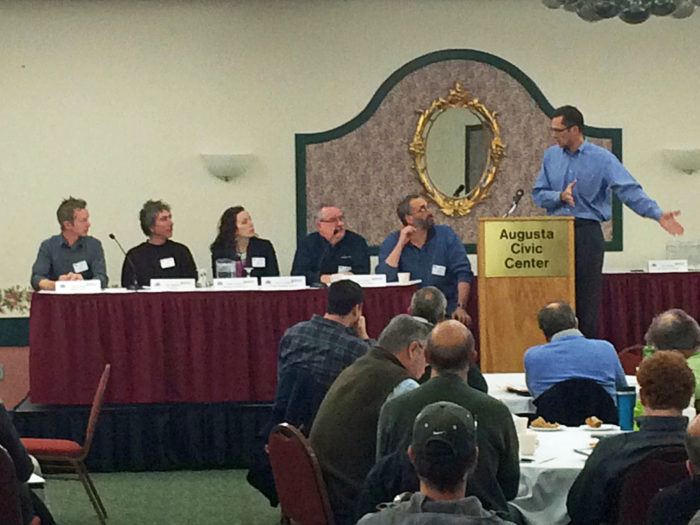
Image Credit: Michael Maines
How do you convince clients to upgrade from code-minimum (or worse) construction to Pretty Good House, or better, levels of performance?
How do you ventilate a commercial-style range in an airtight house?
If your house was a car, what kind of car would it be?
What do these questions have in common? They were all discussion points at a December 2, 2014 conference in Maine, co-hosted by the Maine Indoor Air Quality Council (MIAQC) and the Maine Association of Building Efficiency Professionals (MABEP).
Here was the description of the panel provided by the conference program: “A panel of local professionals will describe how they have worked with customers whose first priority may not be energy efficiency or indoor air quality, and what they have done to get their customers to incorporate both into their designs, while staying within budget.”
The cast of characters
Eric Werling was the guest speaker at the event. He is the program coordinator for the U.S. Department of Energy’s Building America program. Werling works with Sam Rashkin (“the father of Energy Star Homes”) to make energy efficiency a profitable business, not just a government handout. The program’s website introduction has a lot in common with GBA and the Pretty Good House (PGH) movement: “Learn about how this world-class research program can help the U.S. building industry promote and construct homes that are better for business, homeowners, and the nation.”
Eric’s presentations were informative and entertaining (especially when he pulled out his guitar and rhapsodized on the topic of building science.)
The real entertainment, however, came with the Pretty Good discussion panel. There to discuss the Better Building Standard were:
A Pretty Good standard?
Like most Pretty Good House discussions, topics ranged all over the place, including the requisite “It’s a stupid name for a building standard” comments. (To which someone usually responds that it’s not actually a building standard, and someone else suggests that a bit of wit and cynicism may help one understand the title.)
In between rabbit holes, the discussion occasionally came back to the official topic: how to convince people to spend extra for performance when they would prefer to spend their money elsewhere.
State of the industry
First, though, there is talk about the state of the industry. It was noted that existing housing stock is so old that it is still standing mostly due to the drying effect of massive heat and air movement through the envelope. In new construction, it will be interesting to see what is still standing after two or three decades, thanks largely to trapped water in its various forms.
Panelist Steven Caulfield joked that most old houses in Maine have running water — not necessarily in pipes, but across the basement floor, thanks to a high water table and rubble foundations.
The consensus is that problems like that aren’t easy to fix, but should be addressed before tackling air sealing or other energy upgrades that slow moisture on its way out of the house; failure to do so not only puts the health of the building at risk, but the health of the occupants as well.
Another problem in the industry are the workers themselves. Working in the trades is no longer seen as a viable career for those entering the workforce, so the majority of tradespeople have been working in their career long enough that they don’t readily accept new ideas or new products. One solution that panel moderator Dan Kolbert likes is the monthly Building Science Discussion Group at Performance Building Supply in Portland, Maine, where peers compare notes on best practices (and generate ideas such as the Pretty Good House concept).
Other solutions include conferences such as the one where the discussion was being held, and forging relationships with contractors (if you’re an architect) or architects (if you’re a contractor), to share information and build trust.
How do you get through to clients?
Finally, we got to the topic: How do you convince clients to upgrade their homes’ performance, including air quality?
There were a few common themes among the answers, include educating the client, holding a hard line for details and components that you feel are important, and treating new construction differently from renovations.
Panelist Emily Mottram noted that “Those who educate the market, own the market.” Not only has she found that educating clients is a key to better-performing designs, but she also teaches building science and sustainable design at a local college. She finds that in her role as a teacher, she is seen as an expert, which automatically garners her respect from clients and the builders she works with.
“You know what’s easy to sell?” said panelist Chris Briley. “Science.” He recommends not depending on charts and statements about MERV-15 filters, though, but instead suggests using everyday examples relating to comfort, health, toxic chemicals, and so on.
Panelist Jim Bahoosh added that “no frost on windows” is another relatable example of a performance issue.
Bahoosh said that technology isn’t the answer, and that it’s easy to live in a big house. He does not “sell,” he said, but leads by example, and has earned a reputation for building small, simple, attractive houses that perform well.
For renovation work, make energy audits mandatory
Kolbert said that he’s considering making an energy audit an automatic part of every renovation he does, regardless of size or primary reason for remodeling. At least then he will know the metrics and a starting point for a conversation with the homeowner.
Eric Werling stated that it’s about believing in the quality of what you deliver, and then conveying that conviction to the client. It simply costs more for better and more materials, to do things the right way, and to check your work, and that clients have to understand that.
The conversation turned to setting a hard line for the things you believe in; Bahoosh tells clients that they have to install ventilation, that it’s not an option. He says that because his houses are small, he can get away with using an exhaust-only approach, using bath fans with passive air inlets. He sets the fans to run continuously, with the option to run faster when the bathroom is “occupied.”
Mottram agreed with Bahoosh’s approach, at least for retrofits: she recommends spot ventilation using Panasonic Whisper Green fans, and strongly recommends ventilating bedrooms. She reasons that you are in that space for eight hours a day, more than any other place (with the possible exception of your office). She said that the fans are “idiot-proof,” but that you have to actually test the airflow — in her experience as a HERS rater, she has found many fans that do not perform as advertised. “Just because you hear it running does not mean it’s working the way it should,” she said. She concedes that retrofitting an existing house is often a hard sell, but that in new homes, omitting ventilation is not an option.
Kolbert added that improving indoor air quality (IAQ) can be a hard sell; we don’t necessarily know the metrics. “ASHRAE 62.2 is a good start but it’s hard to know if it’s the right answer,” he said. He does a lot of renovations and occasionally builds a new home, and says that while the new DC bath fans are an easy sell, it’s hard to sell HRVs for an existing house. “We know that IAQ follows right behind energy efficiency upgrades,” he says, but adds that it’s hard to quantify that fact for clients in a way that makes them open up their wallets.
Further discussions about ventilation
The panelists continued their discussion of ventilation-related questions: in a PGH, how do you provide whole-house ventilation? What do you do for range hoods? Dryer exhaust?
Briley noted that a 1600-cfm range hood fan over a six-burner range has no business being in an energy-efficient house. “Unless you cook a lot, and I mean a lot,” he added.
Mottram stated that she had a situation where a client’s range hood fan kept burning out, and they finally noticed that with the fan running, opening the front door produced a “Whoosh” — the house was so tight that the modest fan was creating significant negative pressure within the house, and undue stress on the fan’s motor.
A followup question was asked about how to balance pressure within a house, as HRVs don’t provide that function. Someone noted that the installation needs to be commissioned, but that most installations are not commissioned and therefore do not work as they should. In fact, people often turn the ventilation systems off and forget to turn them back on.
An audience member named George Terrien (also an architect and former president of the Boston Architectural College) asked, “This conversation is for the Volvo crowd. What about the regular people?”
Sarah Holland, another audience member (and architect), noted that we have been building Yugos, but there is now plenty of room in the Ford Focus to Toyota Prius range. And that annual cost of ownership for a Mercedes kept for twenty years can be lower than another, less-expensive car.
What really matters?
As a wrap-up to the conversation, audience member Kris Brill (owner of a high-performance window company) asked the panel, “What are the most important elements of a Pretty Good House?”
Briley: “The envelope: 10/20/40/60 levels of insulation, or enough to reduce the mechanical system. Oh, and ventilation, and I don’t say that just because this event is co-hosted by the Maine Indoor Air Quality Council.”
Bahoosh: “Make it lovely.”
Kolbert: “Size.”
Mottram: “Ventilation, envelope — and it has to look good.”
Author’s note: At the conference introduction, we learned that MIAQC recently lost funding; after 16 years of helping to improve indoor air quality in Maine, funding through the American Lung Association and Maine DHHS was not renewed. The organization is looking for ways to continue its mission. The group will offer several opportunities for learning at upcoming events. MABEP has a complimentary mission.
Michael Maines is a residential designer in Palermo, Maine. He also spends a few days a week planning panelized Passive Houses at Ecocor High Performance Buildings.
Weekly Newsletter
Get building science and energy efficiency advice, plus special offers, in your inbox.




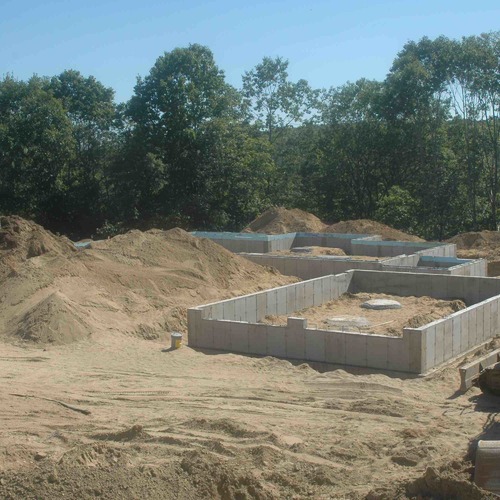
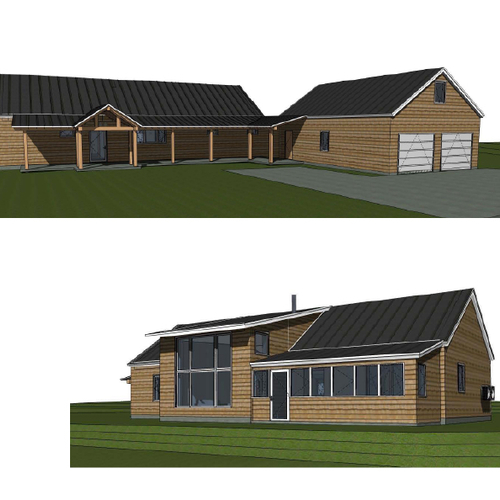
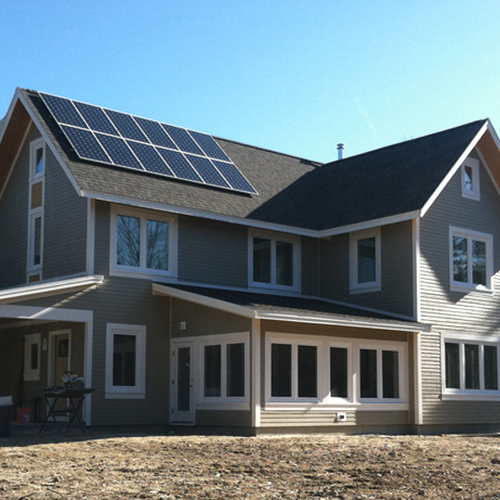
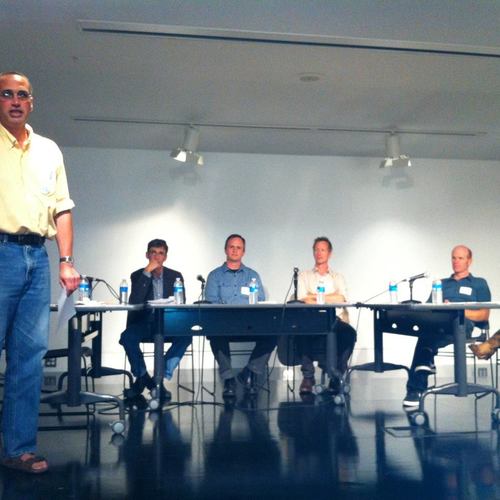






25 Comments
So...
The take away for builders is it's still hard slogging.
I hope we see more blogs by Mike Maines. I've always enjoyed his articles.
Still a slog but there's hope
Thanks Malcolm. Yes, one takeaway is that it's still hard slogging to sell energy upgrades. But I think clients are becoming more aware and more educated, manufacturers are continually putting out interesting new products and better, more informative websites, and industry knowledge as a whole is way ahead of where it was just a few years ago. At Ecocor, where I work when I'm not designing my own projects, we are on the bleeding edge of foam-free, panelized, Passive House design, and it's interesting to see how well informed most of our clients are. If we can sell projects, and we do, there is a lot of hope for everyone doing better-than-average work.
I'm not too into cars, but it's always interesting to compare how clients' vehicle choices compare to their housing choices. It seems that the Passive House crowd tends to drive Priuses. What do you think a Pretty Good Car would be?
RJP, yes, it's a simple fact
RJP, yes, it's a simple fact that complex geometry--corners, dormers, overhangs, etc--are more difficult to insulate and air seal effectively. Anything is possible, of course, but there is a cost involved--and people interested in energy efficiency seem to keep a sharp eye on the construction budget!
While I love old houses and classic design as much as anyone (and probably more than most people), replicating what was state of the art 200 years ago in new construction, at the cost of energy efficiency, is a choice only the client can make. There are some beautiful homes out there with simple lines and clean geometry; one just has to get over the idea that it's not what our great grandparents would have built. Back to the car analogy--we have moved away from classic carriage design; shouldn't we do the same with houses?
To be clear, I completely agree that curb appeal is critically important. I'm just not sure that appealing to the least common denominator is the best way forward.
Educate the Public and Improve the Elevations
A high end development here in Central Texas had one of perhaps ten model homes constructed to pretty good standards. It was a large 3500 sqft, properly shaded single story with foam insulation that achieved net zero with 6kw of PV. But it was the plainest looking house on the block. Even with continuous open houses over a year's period, including elaborate online videos and some local news coverage, the builder was limited to building one offs in other neighborhoods. The buying public often makes the call to move on from the curb while all the benefits remain unknown to most. Curb appeal is still important. The house is for sale.
Mike
A Ford Ranger overloaded with firewood scavenged from roadside windfalls.
there are some out here
Am starting the build process, My wife and my 1st and hopefully last. We are all in on good insulation, 20/25/40/60. Not afraid to spend more for "better". That being said I sometimes get the feeling that the vast majority of builders/designers are of the mind set of 10ft ceilings, granite counter tops, kitchen islands and master suites. Is it the old Chicken and Egg thing all over again?
The Pretty Good House And The Name Game
"It’s a stupid name for a building standard." I agree to that comment and would further qualify that if one traces the origin of the phrase, it all started as a disparaging comment/phrase towards the "Passive House" movement and in turn the phrase "Pretty Good House" emerged in order to mock the "Passive House."
There was a rift and some feathers were ruffled and the "pretty good house" phrase emerged in order to cause a mockery of the Passive House. It was basically a class dispute over the "rich" people who built Passive Houses and the "middle class" who built the "pretty good house" and as they say, the rest is history.
Response to Peter L
Peter,
Perhaps Dan Kolbert -- the guy who coined the phrase -- will comment.
In the meantime, speaking as a resident of Vermont, I'm surprised that this example of rural New England (old time Yankee) understatement or wry humor doesn't seem to travel well to other parts of the country.
In other words, Peter -- it seems to me that you are overthinking it.
Rejected versions
We decided that Half (P)ass(ive) didn't have the same moxie.
.
Peter, it wasn't anti-Passive House, it was anti-anything that involves a program that costs money, that is overly complicated, overly expensive, that turns off clients who otherwise are left with code minimum as a standard.... I could go on. The term is usually said with a slight nod, a certain tilt of the head, and a single raised eyebrow--none of which translate well to the computer screen. "Pretty Damn Good" is probably the closest approximation for those who don't get the joke.
Also, it's whatever you want it to be. If you want to use it as a foil to sell better buildings, that's perfect--we actually do that at our Passive House shop--"Do you just want Pretty Good, or do you want the best?" For other clients, it's a big step up from code minimum (or worse) construction.
Origin myth
The exact phrase may have been my stupid joke, but it's mostly other people who have put the work into making it something worth discussing. Or dismissing.
Pretty Good
For me, that the term can't be co-oped as a marketing device is the real beauty of it. I wish there was a Pretty Good Restaurant movement.
Convincing clients to upgrade - reach the women
Women are heavily involved in decision-making for home buying. You've got to get women to understand the significance of the "pretty good home" or whatever else you want to call it. (I actually like the concept and the name). Women traditionally are not aware of these construction concepts, but if you point it out to them how if affects their comfort and family's health, they will buy into it.
We need a campaign to educate women about how these features affect them. If the power goes out in the wintertime, your house will hold the temperature well above freezing and the pipes won't freeze, you will be bringing in clean filtered air instead of relying on random leaks. You will have a home which has been intentionally designed it to avoid mold issues. They'll get it.
We've got to reach the women.
RJP's Texas house
From the description of the house at 3500 s/f all on a single story, the design is large and inefficient, regardless of how many PV cells are on the roof. In nature the most efficient mass comes in the form of a sphere, and in buildings it would realistically be represented by a cube, not a sprawling ranch which only spreads out the envelope and footprint to floor area. Probably my biggest frustration with LEED and or Pausivhaus certifications are that they are too often applied to large houses in an effort to rationalize how "Green" they are. Sure they are probably more sustainable than a house of comparable size that made no effort to be anything but IRC minimum standards, but in no way should building a house that is a little less bad be confused with sustainability. Give me a small Pretty Good House, any day.
Peter L, Leave it at this,
Peter L, Leave it at this, you and I do not agree.
I love "Pretty good house" and Pretty damn good house"
PH is IMO... is a snob appeal thing..... the cost has no reason... seems like most PH builds add ten of thousands to the cost just to play with a spreadsheet. I can play with a spreadsheet for fun and add $0 dollars to the same build.
Done.
PS: Standard construction.. is great... PH is great, PGH is great... building is great period. To build is to... live. and is a great joy. Live.. build... enjoy.
What are we designing?
I think it's a mistake to identify the two extremes as being efficient boxes on one side, and curb appeal on the other. It doesn't matter what shape a house is as long as it covers all the bases architecturally. It needs to address the site, it's neighbours, introduce light intelligently, enable it's inhabitants lifestyles, etc. If this can be done with a simple shape great, if some situations demand a more complex geometry then it needs to be used. I'd bet that one of the major deterrents to people buying energy efficient homes isn't lack of curb appeal, but the mistaken belief among green builders that as long as you have an efficient enough envelope people will overlook other poor decisions in the house design.
Like the term or not (and I
Like the term or not (and I do) it has been proven to have "legs", and the people using it seem to know what it means, in general.
Not sure that I agree with the premise of the original question, that we should or need to "convince" people to upgrade their envelope. Having failed at that in the past, I decided not to try anymore, so I gave up building code minimum houses & only build NZR (PGH with another name - I decided that "NZ" was more descriptive then PGH - no offense Dan).
The leads and buyers coming my way are mostly aiming to lower their energy bill, plus i've seen a few building at this level for environmental reasons. My original assumption - which is proving true - is that educated buyers would realize that these make sense; their friends would visit, word would get out and more and more people would aim for this. That's exactly what is happening. Bottom line - they'll convince themselves; we just need to keep building PGH, NZR, PH and show them.
Tipping point
I am reading Malcolm Gladwell's book "The Tipping Point" where he states his theory of what makes an idea or a product "tip", become far more popular and spread through the population. He conceptualized factors that he thinks makes an idea spread. The 3 concepts he points to are the Law of the Few, Stickiness, and the Power of Context.
Those of us who are seriously committed to building homes and buildings that are more energy efficient (our PGH, PH, NZH, etc) also want to spread the word. One of the first agents of change is the Law of the Few which refers to people who are influential and well connected who latch onto the idea and are able to spread it. Speaking for myself, I am one of those kind of introverted geeky people who is passionate, but not necessarily influential. I am not very likely to be effective at spreading an idea like this - maybe a few people, but not enough to make the idea spread like wildfire. Oprah is a great example as one who attaches herself to an idea and can promote it so that it spreads rapidly through a population.
The second factor is "stickiness" where the idea sticks with you. It's not just a one season fad, the idea becomes ingrained. The idea is memorable and moves you to action. I think the Pretty Good House is certainly memorable and those of us on this forum have certainly been moved to action.
The 3rd factor is the Power of Context which says that the idea must be seen in the context of conditions of the time and place in which it "lives". In our case, we've had recent hurricanes - Sandy, Katrina, Rita that provide environmental context as do the recent snowfall in Boston and California's drought.
So we've got the idea which is memorable, we've got the environmental context, I really think we need to work on more influential people to get it so the idea rapidly spreads beyond the sphere we inhabit.
Bob Irving is saying that it is already happening. Maybe one of his clients is very well connected with a huge social network and he (or she) can show the house and tell them the power bill is only $60/month, that when the power went out for 2 days, the temperature only dropped 5 degrees and the pipes didn't freeze so the idea of building a well-insulated energy efficient home will snowball.
It's not just happening in my
It's not just happening in my business. At the last (or was it '13?) NESEA conference, Kat Klingenberg said she was discouraged by the time it was taking to break PH into the marketplace, but it is happening. There are two new companies (at least) making and selling Euro windows in the US; there are two new companies manufacturing PH wall panels; there is a new company manufacturing HRVs; I have no idea how many builders are doing PH, NZ, PGH, but it is a great many. They are not going out on a limb - there is a demand for these things which is growing. No, we are not there yet, but we are getting there.
Good houses
I'm a judge for NESEA's Zero Net Energy Building award, and I'm really impressed with the quality and variety of the entries. It's an exciting time.
Catchy phrase someday soon or
Catchy phrase someday soon or now even, " Don't buy energy, sell energy; Build a NET+ Home."
Who wants to be a Net+ homebuilder? I do.
Energy. It's everywhere. Capture it. Capture the the speeding photons, the wind, the waves, the waters flowing. Energy is free to capture all around us.
Copyright: aj free for all to use. Add to the narative, add to the PGH movement.
Zero Energy Ready Homes
I think Eric Werling's program (http://www.energy.gov/eere/buildings/zero-energy-ready-home) may in fact be the Pretty Good House.
Zero-energy-ready homes
Thanks, Dan. For more on the Zero-Energy-Ready Homes program, see Government Ups the Energy Star Ante.
Response to Todd Buckley
Todd,
I suggest that you post your question on our Q&A page; that way more GBA readers will see it. Here is the link:
https://www.greenbuildingadvisor.com/qa
local designer/ builder in southern Rhode Island
My wife and I are interested in renovating a 1986 built passive solar house but cannot find local builders that can meet our needs. Do any of you know of someone like you that works in South Kingstown RI?
Thank you, Martin
Log in or create an account to post a comment.
Sign up Log in